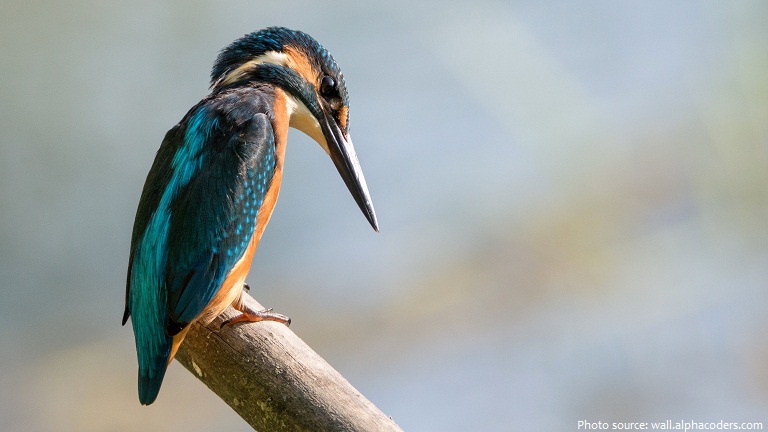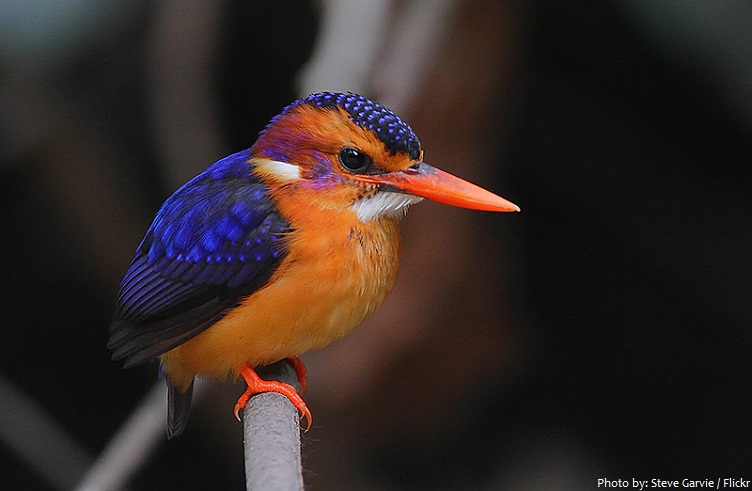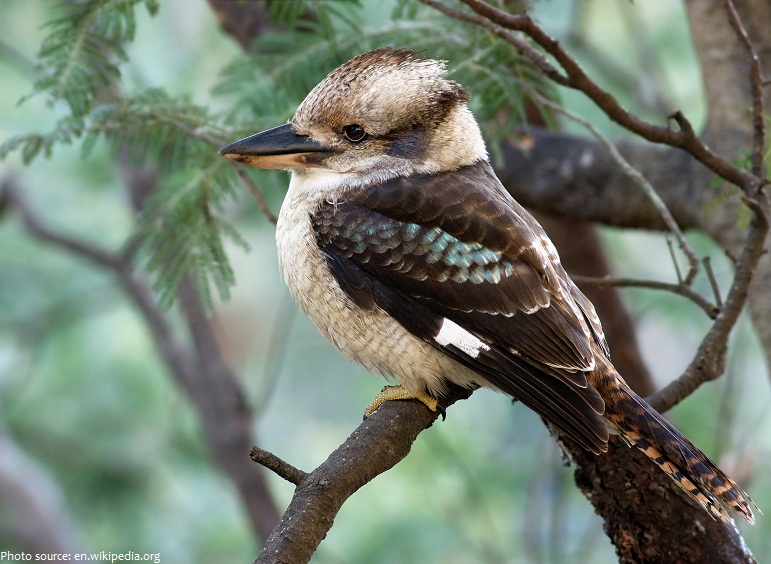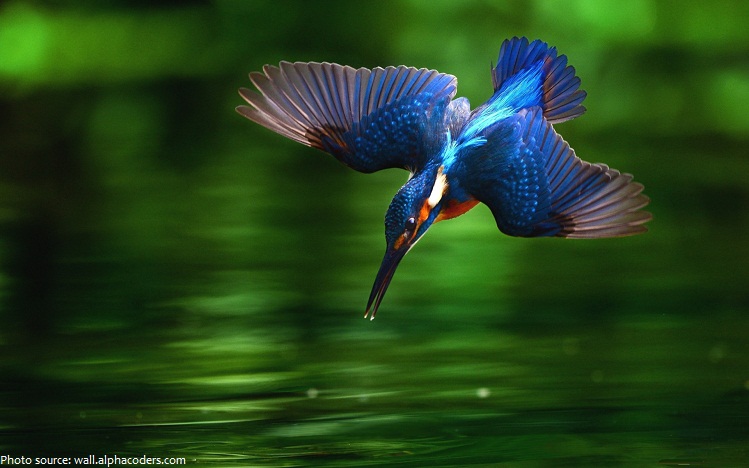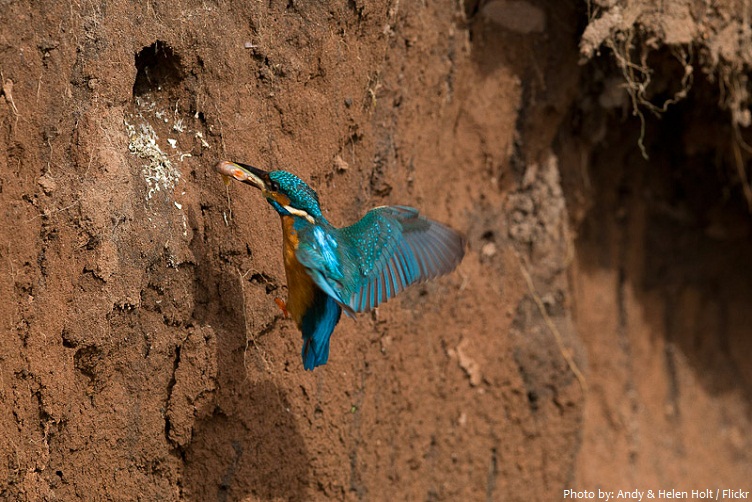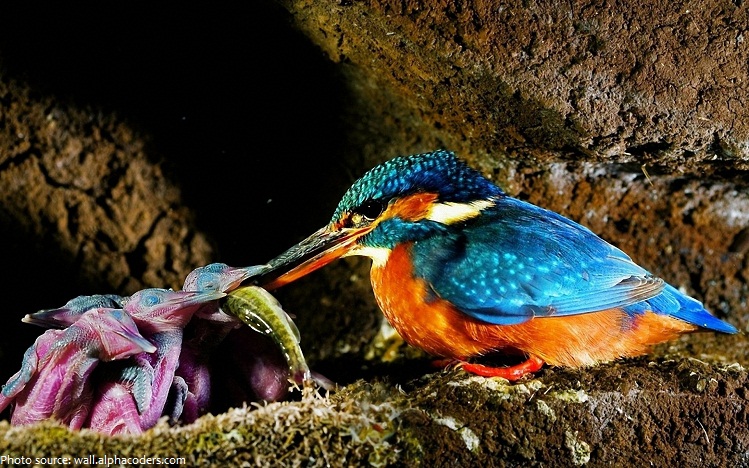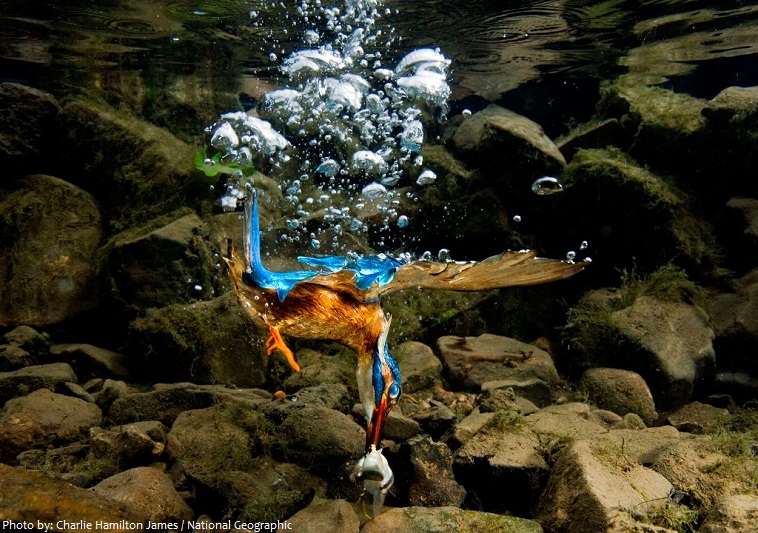Kingfishers are a group of small to medium-sized, brightly colored birds in the order Coraciiformes.
There are roughly 90 different species of kingfisher in the world.
The majority of species are found in Asia, Africa, Australia, and South America; some species in Europe and North America.
They live along banks of rivers and lakes, forest and open woodland, a few species along seashores or in deserts.
Most species are sedentary, but about a few species are migratory or partially migratory.
Median life expectancy is 6 to 14 years, depending on species.
Kingfishers are known for their looks: stocky body; long, thick bill; and striking colors and markings. Many kingfisher species are decked out in feathers of bright blue, green, turquoise, red, or gold. Some have splotches, dashes, stripes, or speckles.
The dagger-shaped bill often seems too long or too big for the rest of the bird, but it is well designed for capturing food.
The smallest species of kingfisher is the African pygmy kingfisher (Ispidina lecontei), which is around 10 centimeters (3.9 inches) long and weight from 9 to 12 grams (0.3 to 0.4 ounces).
The largest species of kingfisher is laughing kookaburra (Dacelo novaeguineae), which is up to 46 centimeters (18 inches) long and weight up to 490 grams (17 ounces).
Most kingfisher species are solitary, only pairing up with a mate during breeding season.
They are most active in the morning and evening, but if it’s not too hot, they may also hunt during the afternoon.
Kingfishers feed on a wide variety of prey. They are most famous for hunting and eating fish, and some species do specialise in catching fish.
Even kingfishers that eat mostly fish also eat other things on occasion, like crabs, crayfish, snails, and frogs. Kingfishers that live in forests, grasslands, and deserts have a different diet, dining on a variety of insects, spiders, reptiles (including snakes), and small mammals, which they catch by spying the prey from a perch and darting out to snap it up.
All kingfishers have excellent vision and can see into the water – even adjusting for refraction, which can make a fish look closer to the surface than it really is.
It has fast and direct flying, but it is also able to hover above the water when it searches and collects food.
Kingfishers are territorial, some species defending their territories vigorously.
Kingfishers have a variety of calls used to announce their territory, warn off other birds, and communicate with a mate and their chicks, such as shrieks, screams, clicks, whistles, chuckles, rattles, and chirps.
They are generally monogamous, although cooperative breeding (more than two birds of the same species provide care in rearing the young from one nest) has been observed in some species.
Kingfishers don’t build nests of sticks or plants. Instead, they nest in burrows that they dig into dirt banks, tree cavities, or old termite mounds. A male and female pair works together to create the burrow, taking turns digging out the soil with their feet. The burrow takes three to seven days to complete. It often slopes upward to avoid flooding and is usually about 1 to 2 meters (3 to 6.5 feet) long, although the record is a 8.5 meters (28 feet) burrow dug by a pair of giant kingfishers.
The burrow ends in a nesting chamber that is about 20 to 30 centimeters (8 to 12 inches) wide and 15 to 17 centimeters (6 to 7 inches) high. This is where the eggs are laid and the chicks raised.
The female lays 2 to 10 (usually 3 to 6) white, unmarked eggs. Both parents take part in the incubation of eggs during a period of 3 to 4 weeks.
The offspring of the kingfisher usually stay with the parents for 3–4 months.
Many young kingfishers drown shortly after leaving the nest due to lack of flying experience.
Because of the high mortality of young, kingfishers usually have two or three broods a year.
The main predators of the kingfisher are birds of prey, foxes, raccoons, cats and snakes.
A number of species are considered threatened by human activities and are in danger of extinction. The majority of these are forest species with limited distribution, particularly insular species. They are threatened by habitat loss caused by forest clearance or degradation and in some cases by introduced species.
The most famous kingfisher is Australia’s laughing kookaburra. It gets its name from its call, which sounds like laughter.
When a common kingfisher dives after a meal, it often submerges completely in the water, folding its wings backward to create a V shape. It can even dive straight through a layer of thin ice to catch a fish below.
Kingfishers like to keep clean and bathe by diving into water and then perching in the sun to dry and preen their feathers. Some use their wings to scrub and scratch the top of their head. They also keep that impressive bill clean by scraping it against a branch until they are satisfied that the bill is in good condition.
In Victorian times, many kingfishers were shot and stuffed to put in glass cases, while their feathers were widely used by milliners to adorn hats.
For the Dusun people of Borneo, the Oriental dwarf kingfisher is considered a bad omen, and warriors who see one on the way to battle should return home. Another Bornean tribe considers the banded kingfisher an omen bird, albeit generally a good omen.
The sacred kingfisher, along with other Pacific kingfishers, was venerated by the Polynesians, who believed it had control over the seas and waves.

